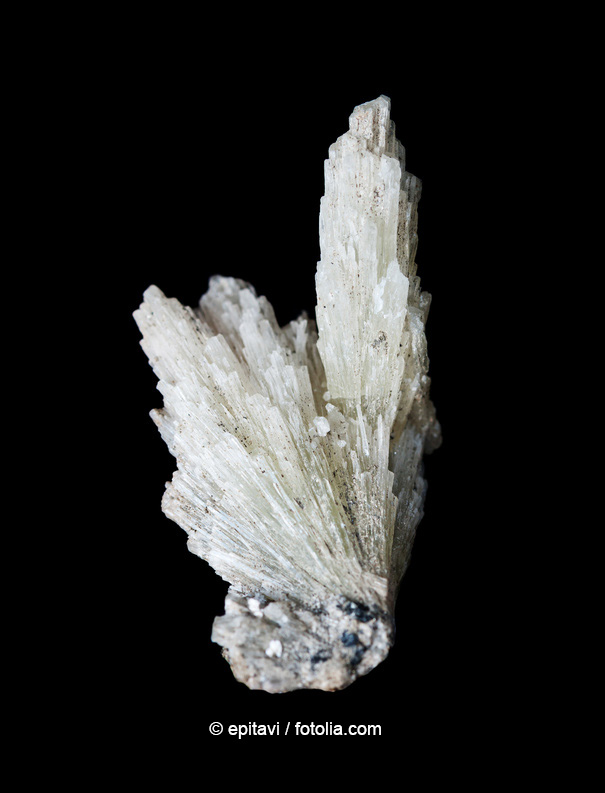Strontium carbonate (SrCO3) was formerly used in large quantities in the manufacturing of CRT TVs (CRT = cathode-ray tubes) as strontium carbonate together with other compounds absorbs and reduces significantly (to almost zero) the X-rays generated from the television tubes.

fireworks © Oleksii-Sagitov / fotolia.com
Nowadays, modern flat-panel devices have almost completely replaced these tubes. Currently, strontium carbonates are being used in pyrotechnics as colour-producing components – strontium produces a crimson red flame. The Latin term “Strontium carbonicum” refers to the homeopathic application of this material which is used to treat osteoarthritis and cerebral sclerosis.
How can I come into contact with this material?
Strontium salts are used in fireworks to produce crimson red flames after ignition and it is not possible to get into direct contact with airborne strontium carbonate nanoparticles during the burning process. Homeopathic administered strontium carbonate could be considered as a targeted approach for medical purposes but it is not clear if the medical products contain micro- or nano-scaled strontium carbonate or even a mixture of both.
Is there any risk from this material to humans and the environment?
Little information exists on the effects of strontium carbonate nanoparticles on humans or the environment. This may be due to the relatively small number of applications for this material. Laboratory studies have shown that different cell types can take up strontium carbonate nanoparticles and high doses may lead to cell death. However, no harmful effects of strontium carbonate nanoparticles have been found in whole animal studies.
Regarding the environmental behaviour of strontium carbonate nanoparticles, there are currently no data available.
Conclusion
In recent years the use of strontium carbonate has been reduced drastically as flat-panel televisions have taken over the TV market. Contact with strontium carbonate nanoparticles could take place through the burning of fireworks or the intake of homeopathic medications. Up until now, no harmful effects of strontium carbonate have been found for the human body.
By the way…
Both strontium carbonate and strontium itself are non-toxic. Radioactive isotopes of strontium were found after nuclear disasters in Chernobyl (former USSR, today Ukraine) and in Fukushima (Japan). As these isotopes are chemically very similar to calcium, the strontium isotopes can accumulate in bone tissue and the resulting radiation could then in turn also damage the bone marrow.
Properties and Applications
Strontium carbonate, whose chemical formula is SrCO3, is a fine, white powder whose properties are similar to those of calcium carbonate (lime). SrCO3 is very little soluble in water; it dissolves in acids, for example in hydrochloric acid, developing carbon dioxide as follows: SrCO3 + 2 HCl -> SrCl2 + H2O + CO2. Strontium is in the group of the alkaline earth metals (2. main group). It is non-toxic just like calcium, which is in the same group. The chemical similarity of strontium and calcium, however, accounts for the fact that the radioactive strontium isotopes that formed during the Chernobyl reactor accident have been able to deposit in the bones to trigger cancer.
Strontium carbonate, among other things, is used for manufacturing ferrite magnets that serve to extract strontium ferrite. Its main application is the production of glass for cathode ray tubes, better known as (color) television tubes. Since strontium carbonate has a relatively large atomic radius, it absorbs the X-radiation that occurs in the tubes. Through addition of SrCO3 and other compounds, the X-radiation disappears almost completely. It is due to today’s LCD and plasma screens, however, that the production of cathode ray tubes is more and more decreasing. Strontium carbonate is also used in glazings. Pyrotechnics rely on the chromophoric salts of strontium to give flames their crimson color

Mineral Strontianit © epitavi / fotolia.com
In medicine, strontium was formerly used sometimes to treat schizophrenia. Today, the substance is used as homeopathic “strontium carbonicum” to treat e.g., arthrosis and cerebral sclerosis.
Strontium carbonate is not self-inflammable as nanometer-sized powder. Also as a mixture with air (dust) under the influence of an ignition source, it is not inflammable, so there is no possibility of a dust explosion.
Occurrence
Strontium carbonate occurs in nature as the mineral strontianite which is one of the main sources for the exploitation of strontium. Strontianite is extracted both in open cast and underground mining. Strontium is named after the mineral strontianite which, in turn, is named after the location of Strontian, Scotland, where the first strontium mineral was discovered.
NanoCare Data Sheets
Humans hardly come into contact with strontium carbonate. Studies show that stress only occurs in cells after high doses have been administered and that this leads to cell death.
Studies on Living Organisms – in vivo
Intratracheal (i.e. into the air tube or trachea) instillation tests were carried out within the project NanoCare. A particle suspension was instilled in the pharynx of the animals and different cell markers were analysed subsequently. During this experimental approach, the strontium carbonate particles did not reveal any biological effects .
Studies Outside the Organism - in vitro
In vitro experiments from the project NanoCare with two differently modified, well-characterised variants of strontium carbonate that were applied to human lung cells have shown that only high doses of at least 25µg/cm2 of the hydrophobic particles can cause stress in cells and a decrease in the cell vitality after 72 hours. No effects were caused by the hydrophilic variant with particles of almost identical primary particle size. No negative effects on the cells were observed during studies with ten different cell lines of different origins treated with up to 10µg particles/cm2 .
Using the so-called vector model which displays some of the elementary cell effects , partners of the NanoCare project proved that SrCO3 has little or no effects at all. Excessive, overloading concentrations of at least 120µg particles per 106 phagocytes were observed to damage the cell function and lead to the formation of reactive oxygen species (ROS).
There are no data regarding environmental exposure with strontium carbonate nanoparticles available.
No studies are available on the possible absorption into the body via the lungs, skin or gastrointestinal tract.
For strontium carbonate nanoparticles, there are no data regarding uptake and risk for environmental organisms available.
Studies show that strontium carbonate particles can in principle be taken up by different cell types. The uptake mechanism has not yet been investigated for these special particles .
There are no data regarding environmental behaviour of strontium carbonate nanoparticles available.
 >
>